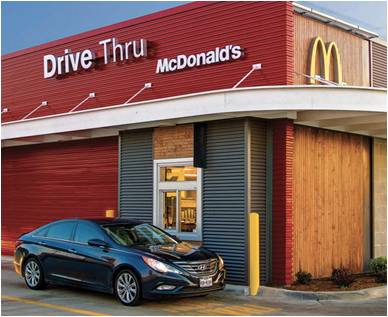Experiential Marketing in the COVID-19 World
It has been more than a year since the COVID-19 pandemic hit and shook the world. It has overwhelmed lives and businesses around the world. The COVID-19 crisis has also forced brands to rethink the way they serve customers and the way they meet their needs.
The impact of COVID-19 on customer behavior is tremendous and widespread across all industries, from B2C to B2B to eCommerce.
Expectations have heightened, human core values have shifted, digital is now the new norm, and health and safety first have become the top priorities of people everywhere. This has resulted in the businesses increasing their thrust of reorganizing their digital approach to customers.
Experiential Marketing in COVID-19 Times
Experiential marketing is not new but a focused approach that is required in these difficult times. It is a consumer engagement technique that allows brands to bring life to their marketing tactics and create meaningful interactions.
Interactions can have an immediate and lingering effect on customers and promote a sense of trust and loyalty toward the brand.
According to the Brand Experience study by Freeman, one-third of the Chief Marketing Officers (CMOs) will devote 21-50% of their budget to experiential marketing.
88% of customers buy from brands as per their needs, while 80 percent of people prefer buying from brands whose actions align with their beliefs and values. 92% of customers are expecting companies in the pandemic to keep their employees and customers safe.
The New Reality Experience
The heart of experiential marketing is a belief in action over words. The pandemic has forced businesses to realize that experiential brand thinking requires creativity, care, connection, and effectiveness. Businesses need to master the Five Pillars of experience excellence to provide the best new reality experience to customers.
1. Expectations: Customer expectations have become more fluid after the pandemic. But customers also look for brands that know how to meet these needs and expectations. Companies need to set communications for proactive expectation and actually deliver what they promise.
2. Corporate Kindness: The world demands the safety and wellbeing of each other. Customers want brands to invest time and effort to understand them and their needs. If brands want to drive rapport, they need to show empathy through words and actions.
3. Personalization: The crisis has made everything so uncertain. People can only see the present and tomorrow. So they want businesses to provide experiences that are strongly tailored to their circumstances.
4. Integrity: Acting with integrity is critical in creating trust with customers. If your business is taking corporate social responsibility seriously and contributing to the local community, customers will trust you and keep loyal to your brand.
5. Effort: COVID-19 has amplified the need for easy access to products and services. Brands need to remove unnecessary obstacles and efforts so that customers can achieve their objectives quickly.
Create frictionless processes and provide convenience and relevant information to customers at the right time.
How to Adopt Experiential Marketing in the Pandemic World
1. PHYGITAL Experiences
With the emergence of new technologies like Augmented Reality (AR), Virtual Reality (VR), and Artificial Intelligence (AI), there has been a new trend – PHYGITAL. Phygital focuses on making the “three I’s” a reality: interaction, immediacy, and immersion.
It marries online and offline channels in a way that provides an immersive, speedy, and exclusive experience to customers.
Amazon Go grocery stores in the US are taking advantage of phygital. A customer can scan product codes with their smartphone, pay online through their phone, pick up those products, and then leaves the store without standing in the checkout line.
In China, the Kentucky Fried Chicken restaurants chain has installed smart screens that use facial recognition technology and artificial intelligence to offer personalized services to customers.
2. Virtual Events
Health concerns over COVID-19 have forced businesses to go from in-person events to virtual ones. Some companies might think that the value of an in-person event is lost when you go digital. But that’s not the case.
Virtual events allow brands to connect and engage with customers, all from the safety and security of their home location. Host 3D virtual conferences and video campaigns to give control to viewers. Allow them to experience the content in their own way. This will pave the way to a more independent immersion experience.
Ikea Spain is connecting with people by shifting its focus to video campaigns. Customers can enjoy all the small and big moments through virtual events and order everything online if they like the products through campaigns.
Cottonelle, a leading producer of toilet papers, started a video campaign urging people to “Stock up on generosity”. It also asked people to stop panic buying with a campaign #ShareASquare.
3. Cross-Brand Marketing Collaboration
The pandemic has shifted the focus to a more human-centric ethos. Everything changed practically overnight. In the COVID-19 world, brands are rethinking their strategic partnerships.
Today, the world demands support from everyone. People can overcome the crisis by showing their support for each other. Brands have understood that and looking for innovative collaborations beyond industry lines.
A restaurant dining app called OpenTable partnered with a variety of supermarket chains to convert grocery and other retail stores into a reservable event.
McDonald’s also adopted an innovative approach to the traditional QSR model during the pandemic. It was a simple but thoughtful step.
It showed and is showing meaningful support to the local communities by selling grocery essentials to customers through its drive-thru model.
Lloyds Bank partnered with Mental Health UK to raise awareness and offer resources on dealing with the negative mental health impact of financial problems in the COVID-19 times.
ExxonMobil, an oil and gas corporation, collaborated with a global tech company and a local car maintenance brand to create a new car care ecosystem.
4. Social Media Campaigns around Customer-Curated Experiences
Innovation has been the mantra for brands for years to attract audience attention, but now in this pandemic world, people look for more curated experiences with brands.
Social media is still the top channel to engage with the audience. Social Media Marketing companies need to start social media campaigns that help customers to feel special.
Coperni, an eCommerce brand that sells clothes and bags online, started a campaign called #DrawMeASwipeBag. It challenged its Instagram followers to create a digital version of one of its best-selling bags.
Followers used their creativity to create a digital version of its popular bag and shared their photos with the brand. The brand used those photos as part of the marketing materials. It is an amazing way to involve your audiences and make them a part of the company.
5. Brand Recall Marketing
Brand recall creation is a challenging task for brands. It was difficult in pre-Covid times too and even more now. There is a wide range of choices available to consumers in all FMCG products. Customers don’t want to spend more time and effort in finding the right product in a retail store when there are health concerns in the COVID-19 times.
Strong and positive brand recall can help people to easily pick the brand product they really want. Brand recall reduces the time spent in stores with possible asymptomatic purchasers standing in the queue.
Well-known brands continue to invest in maintaining communication channels that create a positive memory of the brand among customers. Companies need to start digital activation strategies that are relevant to rural and urban customers.
A good brand recall marketing example is by sporting colossus Nike. The brand has made its club training subscription free for a limited period of time to help customers stay healthy and fit during the crisis.
Lego created an animated video for kids asking them to be superheroes while offering suggestions on what to do to stay safe.
6. Merging Customer Experience (CX) and Employee Experience
The experience an organization delivers to customers reflects the brand value and its employees. 41 percent of customers say that a brand’s employee experience is now more important to them while purchasing a product or service because of COVID-19.
Customers want to connect with companies that treat their employees well and maintain their safety. This means brands need to show how they are contributing to employee experience (EX) and merge it with customer experience marketing.
The way companies value their customers, their employees, and the broader community is likely to leave lasting memories in customers’ minds.
These brands proved that they care for their employees which created a great impact on how customers perceive the brand. Shopify announced that it would be providing its work-at-home employees with a $1,000 stipend for purchasing their home office equipment.
Morisons, a supermarket chain in the United Kingdom, has shown appreciation for its employees by increasing their bonus. Verizon Media limited the amount of staff working in its retail stores and assigned alternative projects to the former staff so that they could continue to earn money during the pandemic.
When brands start to focus on employees, they begin to show customers that they truly care for the world as a whole and not just for the business profits. This helps customers to view such brands as the top brands to work with.
Conclusion
Businesses have been affected significantly by various lockdowns in the COVID-19 world. But the positive outcome from Covid is that brands are becoming more creative and connected to their customers.
They have taken experiential marketing seriously and prioritized their actions over words during the COVID-19 pandemic.
With phygital experience, cross-marketing collaborations, community care campaigns, employee experiences, and brand recall marketing, companies can create deep connections and more meaningful relationships with consumers.
This is what experiential marketing is. Allow people to experience your brand through actions rather than just words.
About the Author
Naveen Gupta
Naveen Gupta is the founder and CEO of Fuel4Media Technologies. He has been awarded as the 25 Most Influential Mobile Marketing Leaders and 100 Smartest Digital Marketing Leaders by World Digital Marketing Congress.
Fuel4Media is India’s one of the fastest growing Digital Marketing company, Mobile App Development and Mobile App Marketing Company. His forte lies in developing and executing innovative mobile and web technologies, digital marketing and mobile marketing strategies, and everything related to digital.
Must read:
Google Announces June 2021 Core Algorithm Update-What You Can Do








